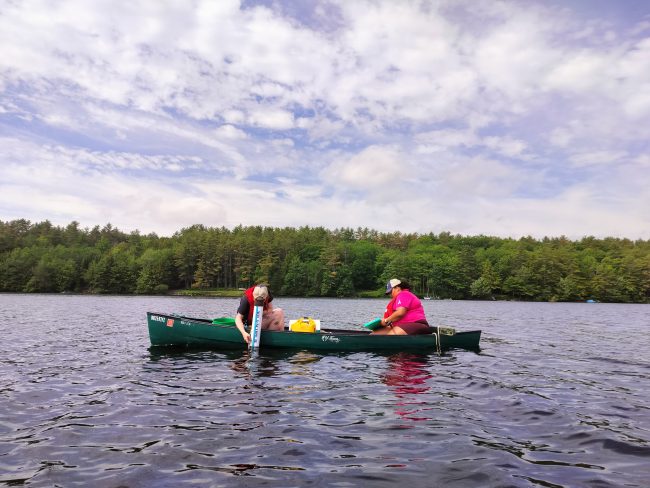I have written in past issues about PFAS and perchlorate, two kinds of contaminants that are potential threats to lakes in our area. For those who missed those articles or need a refresher, here are the basics:
Per- and polyfluoroalkyl substances, or PFAS, are an extremely broad class of synthetic chemical compounds used in non-stick cookware, food packaging, fire-fighting foams, and more. Their chemical properties make them persistent in the environment, earning them the name “forever chemicals”. There is also evidence that PFAS can be hazardous to human health. In Maine, PFAS gained attention when extreme levels were found in dairy products from Arundel and Fairfield farms that had applied sewage sludge to fields as fertilizer. More recently, an accidental release of firefighting foam from an airport hangar in Brunswick led to severe PFAS contamination in nearby streams and estuaries.

Perchlorate, a single chlorine atom bonded to four oxygen atoms, is used as an oxidizer in fireworks and rocket propellants and has been found in some public drinking water systems and food. When humans are exposed to high concentrations, the chemical inhibits iodide uptake by the thyroid, which impacts hormone production. California and Massachusetts regulate this chemical in drinking water (6 and 2 ppb limit, respectively; ppb = parts per billion), but the EPA has yet to formalize a national regulation. Maine has no regulation, but the state Center for Disease Control and Prevention has issued a maximum exposure guideline for perchlorate of 0.8 ppb in drinking water.
Information about both PFAS and perchlorate in lake water is lacking, especially in Maine. The Kendal C. and Anna Ham Charitable Foundation awarded LEA a grant to measure PFAS in local lake water, and more recently, we received funding for similar work through the Casco Bay Estuary Partnership (CBEP). In the fall of 2024, we collected samples from 12 Bridgton lakes and had them analyzed for 40 different PFAS compounds at the Bigelow Laboratory. The good news is that all sites had low to undetectable concentrations. In the words of the Bigelow chemist, “all samples looked very clean.” For 2025, we will continue sampling for PFAS in other area lakes to make sure that this pattern holds throughout our service area.
In summer 2024, we volunteered for an EPA-funded research project examining perchlorate in lake water following fireworks usage. We collected and filtered water samples from Long Lake and Trickey Pond before and after the July 4th fireworks shows, and sent the samples off for analysis. All samples had very low (< 0.2 ppb) perchlorate concentrations, except for Long Lake water collected a week after the fireworks, which had about 3 ppb. We will be doing more sampling this summer to help verify those findings.
Even though the threat of perchlorate contamination from fireworks in lake water in our area seems low, there are still concerns about noise, particulates, and litter after using fireworks that should be discussed when planning permitted, public displays. It is also important to note that private fireworks displays can only be over your own land or the land of someone who has given you permission. Private displays over public waterbodies like lakes or ponds are not legal in Maine.
–Ben Peierls, LEA Research Director